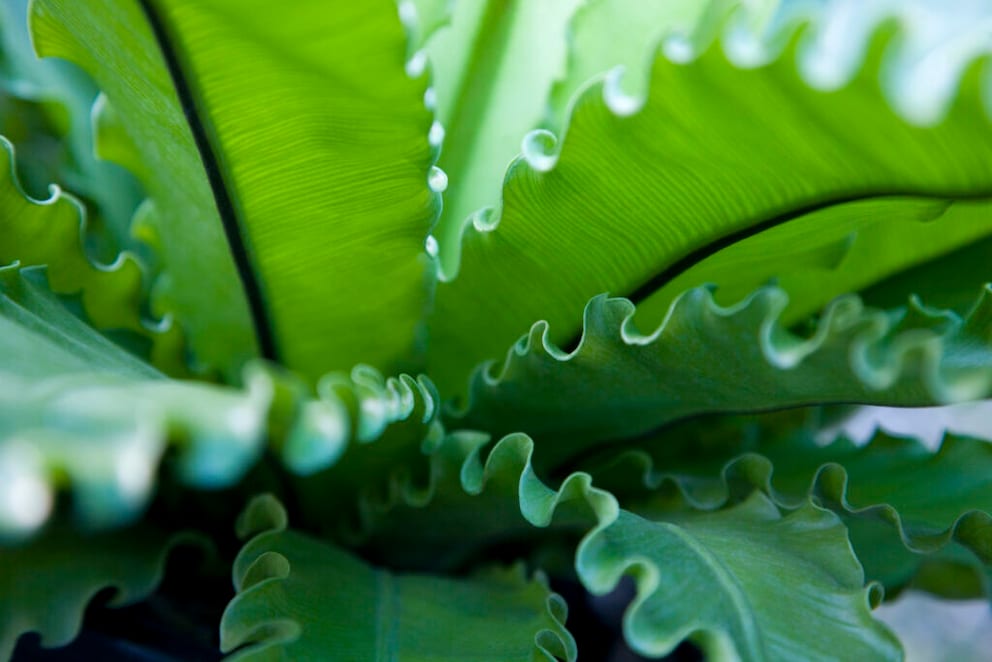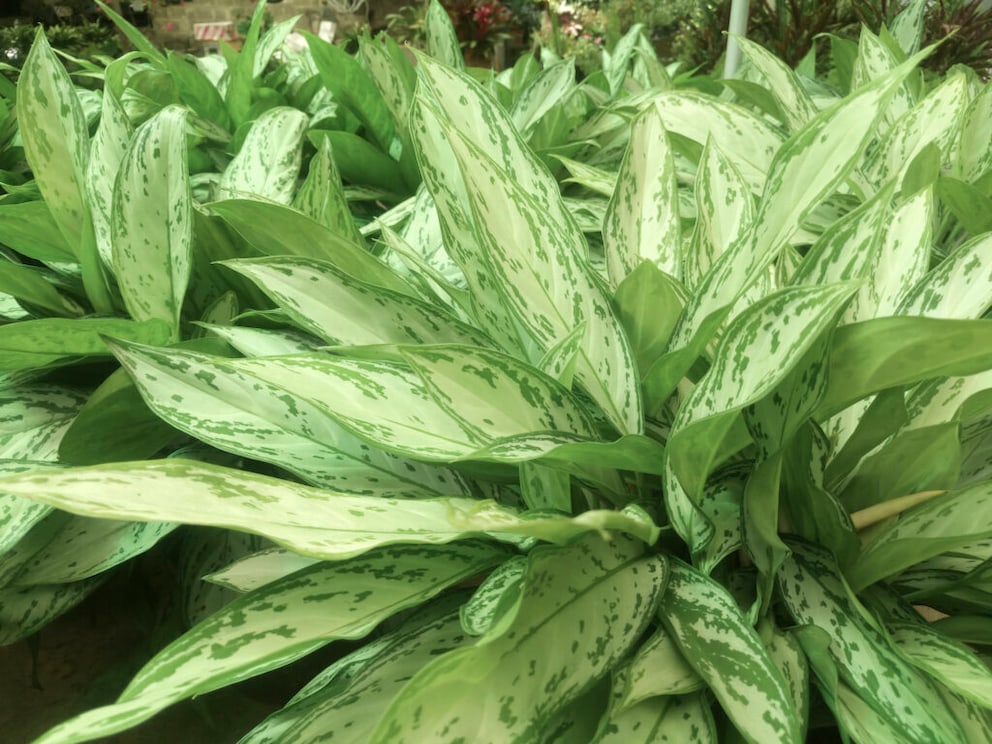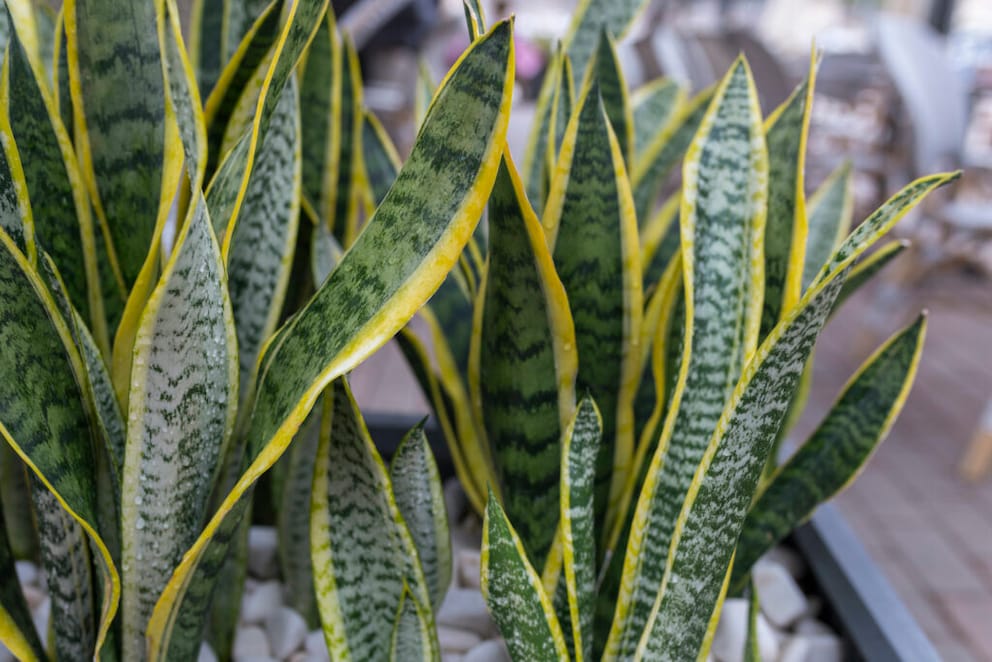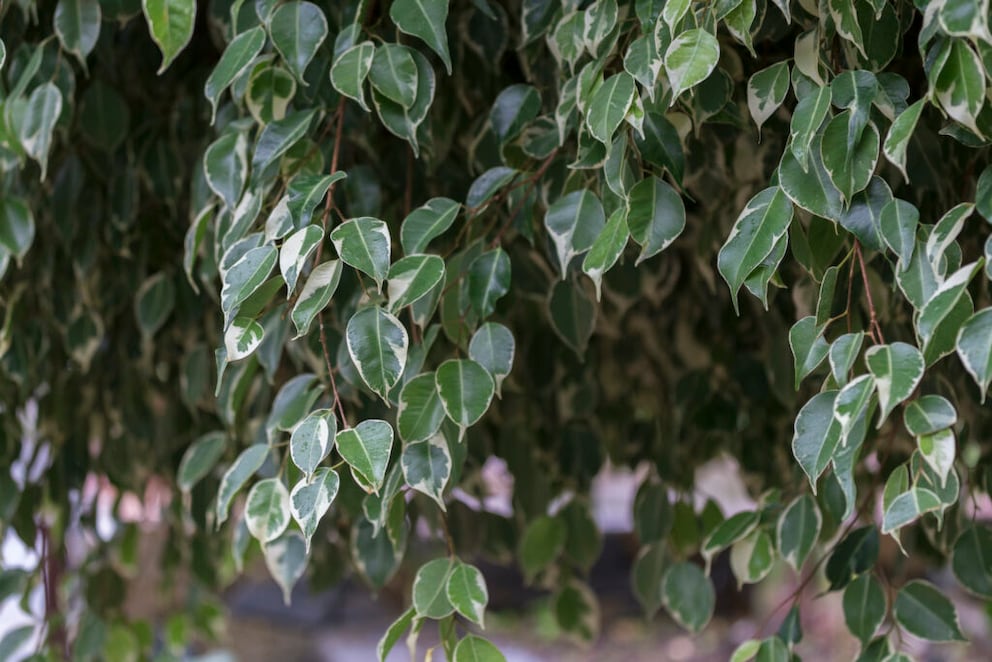June 17, 2021, 10:15 am | Read time: 4 minutes
Summer is back—and how. Temperatures over 86 degrees Fahrenheit are not uncommon, and not everyone has air conditioning. But you don’t necessarily need technical devices to banish the heat from your rooms. Plants can also provide cooling.
Houseplants are a great addition to any home. They not only bring greenery into your living space but also effectively purify the air. Some of these plants are true pollution fighters and oxygen producers. Certain natural air purifiers can even break down chemical pollutants. Researchers have found that at least one plant per 100 square feet is recommended. The larger and more lush the plant, the more air it can filter. Additionally, plants increase the humidity in a room, which provides a cooling effect. Plants with large leaves, in particular, perform a lot of photosynthesis, releasing up to 90 percent of their watering back into the room air. This increases humidity and cools the air. In winter, this effect helps to humidify dry heating air. Find out which cooling houseplants are suitable for your home here.

9 Plants Perfect for the Bedroom

Which Plant Matches My Zodiac Sign?

6 Plants That Help Against Mold in the Bathroom
6 Cooling Houseplants as Natural Air Conditioners
Plants with large and/or many leaves are particularly suitable for cooling down a room. However, to achieve a noticeable effect, a larger number of plants is needed. While they certainly can’t replace a conventional air conditioner, they can significantly improve the indoor climate.
1. Bird’s Nest Fern (Asplenium nidus)

The Bird’s Nest Fern is a popular evergreen, non-flowering houseplant. Originally found on trees in the tropics of Asia, Africa, or Australia, it is one of the plants that help cool down a room. Its care is quite simple, as it is considered robust and low-maintenance. However, it is important to water it frequently. It does not tolerate waterlogging. It thrives best at year-round temperatures of 68 to 77 degrees Fahrenheit in a wind-protected, bright location that is not exposed to direct sunlight.
Also interesting: 11 particularly low-maintenance houseplants
2. Chinese Evergreen (Aglaonema commutatum)

This houseplant rarely blooms, so few ever see the white flowers of the Chinese Evergreen. However, it impresses with its attractive, white-silver patterned long leaves, which can grow up to 12 inches long. The Chinese Evergreen needs to be watered consistently, but the soil should never be too wet, and the leaves should be occasionally misted. It thrives year-round in a warm, not necessarily bright location with high humidity, such as a bathroom.
3. Snake Plant

Another cooling houseplant is the Snake Plant, also known as Mother-in-Law’s Tongue. This nearly indestructible plant is one of the easiest houseplants to care for. In addition to cooling the room air on hot summer days, it also filters pollutants from the air with its long leaves. Its name comes from the fact that some varieties of Snake Plant are used to make bowstrings. While the Snake Plant tolerates hot temperatures up to 86 degrees Fahrenheit, it does not like drafts. When watering, the rule is: less is more. The Snake Plant handles dry spells better than too much water.
Also interesting: 7 tips to improve indoor air quality
4. Rubber Plant (Ficus elastica)

Also interesting: 7 tips to improve indoor air quality
The Rubber Plant also contributes to a pleasant indoor climate on summer days. With its many large and sturdy leaves, it cools the room temperature. Ideal conditions for it include temperatures starting at 64 degrees Fahrenheit, moderate watering, and a bright location without drafts.
5. Weeping Fig (Ficus benjamina)

This cooling houseplant is also a classic among houseplants. However, few are aware of the Weeping Fig’s cooling effect. Its many small leaves are nearly ideal for cooling the room air in summer. To ensure this natural air conditioner works best, it should be adequately watered, especially on hot days.
6. Palms

They bring the summer look into your home while cooling down the hot temperatures inside. Palms are also excellent cooling houseplants. Again, the larger the leaves, the more carbon dioxide can be absorbed and oxygen produced. Depending on the type of palm, these natural air conditioners may need to be watered daily. In return, they provide a pleasant room temperature.

